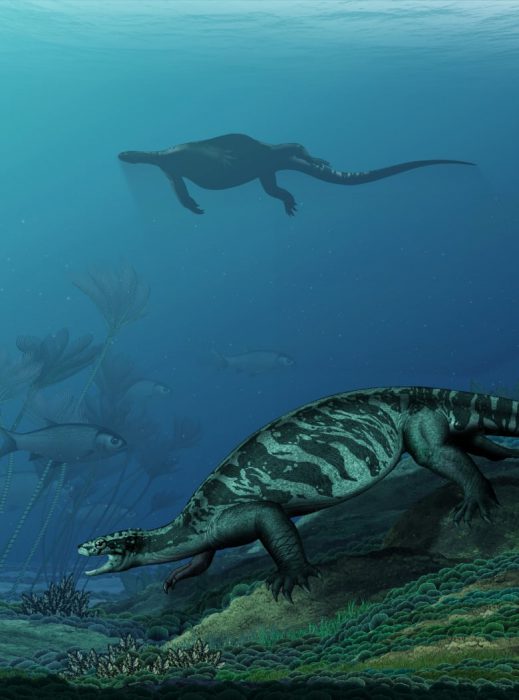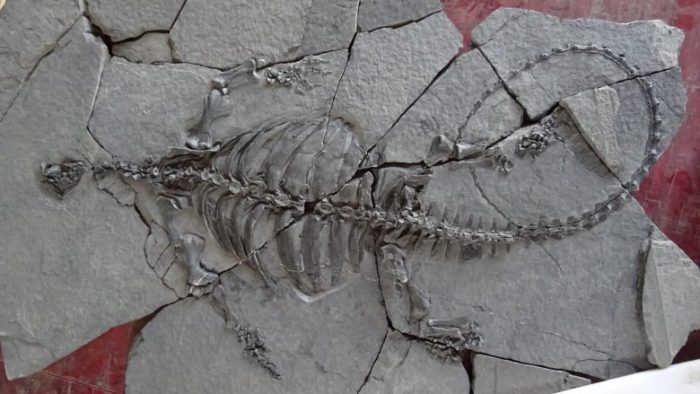On one hand, the turtle seems like one of the most practical animals on the planet. A tough shell provides round-the-clock protection in an unforgiving world. Perfect!
But on the other hand, the more you think about it, the more that turtles seem pretty weird. Really, where did that shell idea even come from? Well, thanks to a recent discovery by a farmer in China, we may have an answer.
Eorhynchochelys sinensis (say ehr-AYNK-oh-che-liss sih-NEHN-sis), or "dawn-beaked turtle from China", wasn't a true turtle. But this 228 million year-old Triassic fossil is one of the best links to modern turtles ever found.
Wide, but long

An artist imagines a pair of E. sinensis in the Triassic wild. (IVPP)
Turtles today get their distinct top shell from the way that their ribs have flattened out and evolved. Over millions of years, the ribs fused together with parts of the backbone to form the top shell, or carapace. E. sinensis didn't have a carapace, or a plastron (the underside of the shell that covers a turtle's belly). But it did have a flat and wide ribcage that flared out from the reptile's body. You could see that it was on its way to a shell.
E. sinensis also had a head similar to a turtle's in shape. It was short with a beak-like tip. However, it had teeth in the back of the jaw that modern turtles do not. It also had a very un-turtle-like long tail. If one swam above you quickly, you would probably think it was a turtle ... just one with a longer tail and bigger legs than you'd expect.
A species has to start somewhere!
What was life like for this ancient turtle in the Triassic? At about 2.5 m (8 feet) long, it was bigger than an adult human, but smaller than the top marine reptile predators of the day. So instead of competing with ichthyosaurs and plesiosaurs in the open water, it likely would've stayed in shallow water and near river mouths.
If in danger, it could've buried itself in the mud on the water floor. Its unique body shape would've probably allowed it to hug close to the bottom. Eventually over time, scientists believe that this beast evolved into a species that led to green sea turtles, giant land tortoises, and the adorable terrapins that inhabit our rivers and ponds. That's quite a legacy—take a bow, E. sinensis!
 Even as a fossil, Eorhynchochelys sinensis looks like a turtle-lizard hybrid. (Nick Fraser/National Museums Scotland)
Even as a fossil, Eorhynchochelys sinensis looks like a turtle-lizard hybrid. (Nick Fraser/National Museums Scotland)









